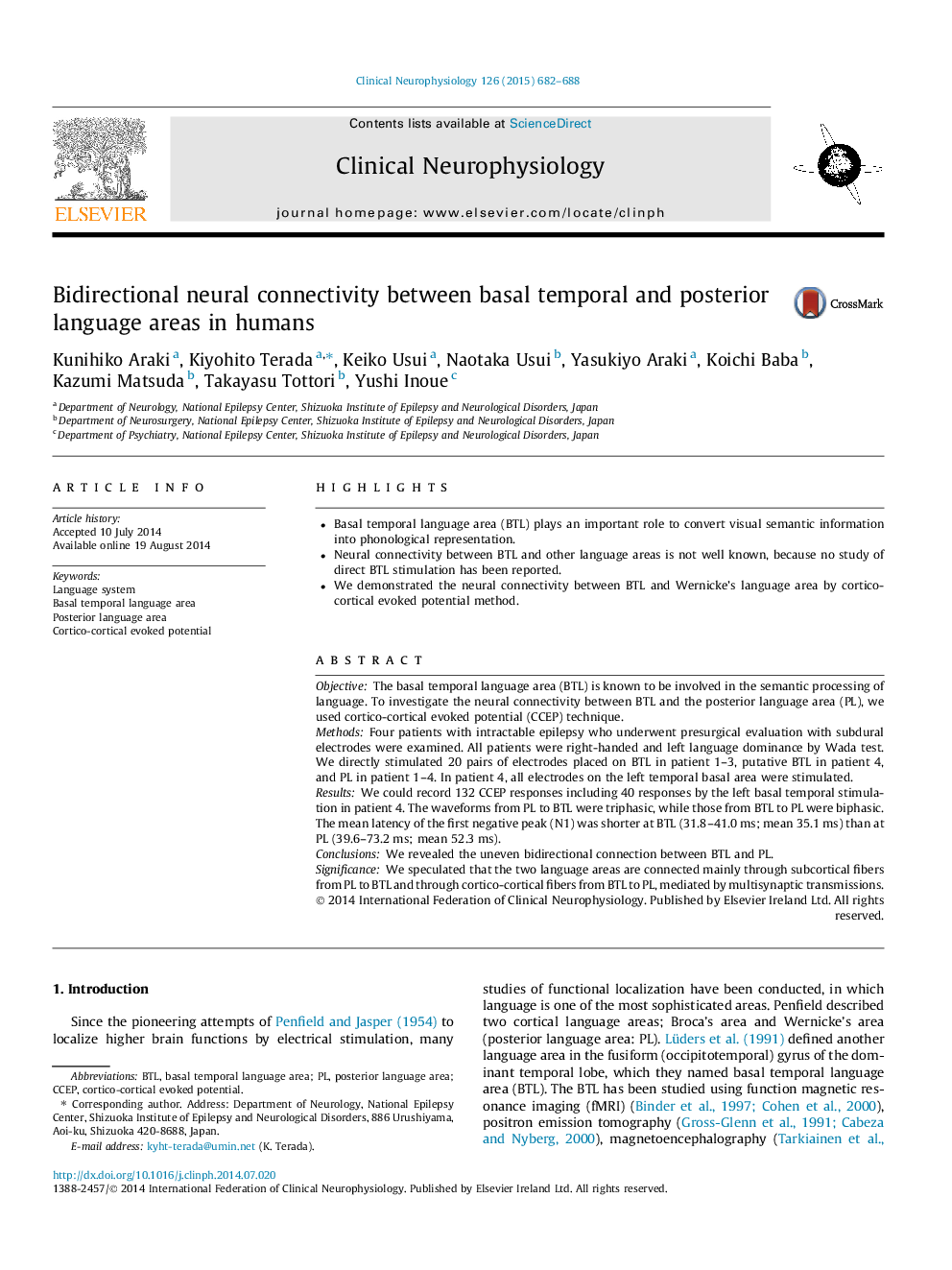| Article ID | Journal | Published Year | Pages | File Type |
|---|---|---|---|---|
| 3042995 | Clinical Neurophysiology | 2015 | 7 Pages |
•Basal temporal language area (BTL) plays an important role to convert visual semantic information into phonological representation.•Neural connectivity between BTL and other language areas is not well known, because no study of direct BTL stimulation has been reported.•We demonstrated the neural connectivity between BTL and Wernicke’s language area by cortico-cortical evoked potential method.
ObjectiveThe basal temporal language area (BTL) is known to be involved in the semantic processing of language. To investigate the neural connectivity between BTL and the posterior language area (PL), we used cortico-cortical evoked potential (CCEP) technique.MethodsFour patients with intractable epilepsy who underwent presurgical evaluation with subdural electrodes were examined. All patients were right-handed and left language dominance by Wada test. We directly stimulated 20 pairs of electrodes placed on BTL in patient 1–3, putative BTL in patient 4, and PL in patient 1–4. In patient 4, all electrodes on the left temporal basal area were stimulated.ResultsWe could record 132 CCEP responses including 40 responses by the left basal temporal stimulation in patient 4. The waveforms from PL to BTL were triphasic, while those from BTL to PL were biphasic. The mean latency of the first negative peak (N1) was shorter at BTL (31.8–41.0 ms; mean 35.1 ms) than at PL (39.6–73.2 ms; mean 52.3 ms).ConclusionsWe revealed the uneven bidirectional connection between BTL and PL.SignificanceWe speculated that the two language areas are connected mainly through subcortical fibers from PL to BTL and through cortico-cortical fibers from BTL to PL, mediated by multisynaptic transmissions.
